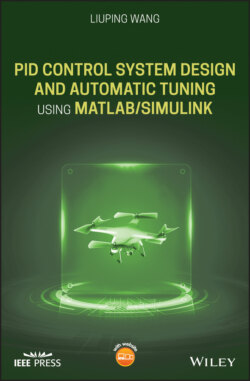Читать книгу PID Control System Design and Automatic Tuning using MATLAB/Simulink - Liuping Wang - Страница 21
Example 1.3
ОглавлениеAssume that the plant is described by the transfer function:
(1.25)
and the PI controller has the parameters: , 2. Find the closed-loop transfer function between the reference signal and the output signal for the original PI controller structure (see Figure 1.5) and the IP controller structure (see Figure 1.7), and compare their closed-loop step responses.
Solution. With the PI controller in the original structure, the closed-loop transfer function between the reference signal and the output signal is calculated using,
(1.26)
By substituting the plant transfer function (1.25) and the PI controller structure (1.16), the closed-loop transfer function is
(1.27)
With the PI controller in the IP structure, the Laplace transform of the control signal is defined by (1.24). By substituting this control signal into the Laplace transform of the output via the following equation,
(1.28)
re-grouping and simplification lead to the closed-loop transfer function:
(1.29)
Figure 1.8 Closed-loop step response of PI control system (Example 1.3). Key: line (1) response from the original structure; line (2) response from the IP structure.
By comparing the closed-loop transfer function (1.27) from the original PI controller structure with the one (1.29) from the alternative structure, we notice that both transfer functions have the same denominator, however, the one from the original structure has a zero at . Because of this zero, the original closed-loop step response may have an overshoot.
Indeed, the closed-loop step responses for both structures are simulated and compared in Figure 1.8, which shows that the original PI closed-loop control system has a large overshoot; in contrast, the IP closed-loop control system has reduced this overshoot. The penalty for reducing the overshoot is the slower reference response speed.
The closed-loop transfer function obtained with IP controller structure can also be interpreted as a two degrees of freedom control system with a reference filter . This topic will be further discussed in Section 2.4.2.
Another form of PI controller, perhaps more convenient for model-based controller design as in Chapter 3, is described by:
(1.30)
This form of PI controller is identical to the original PI controller structure when the parameters of and are selected as
(1.31)
